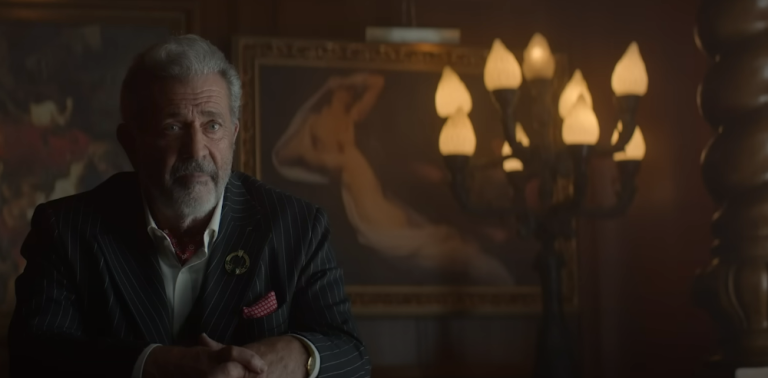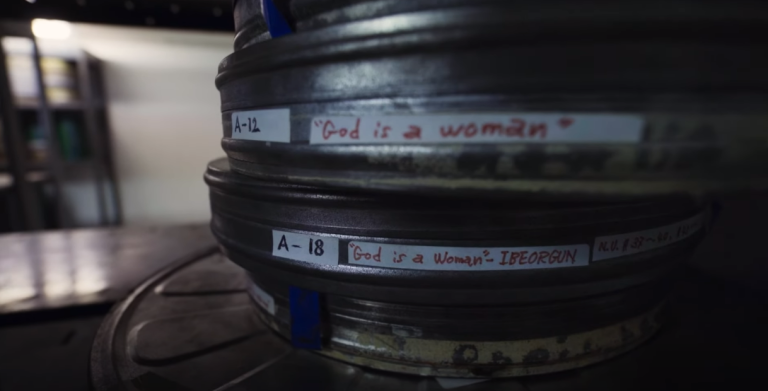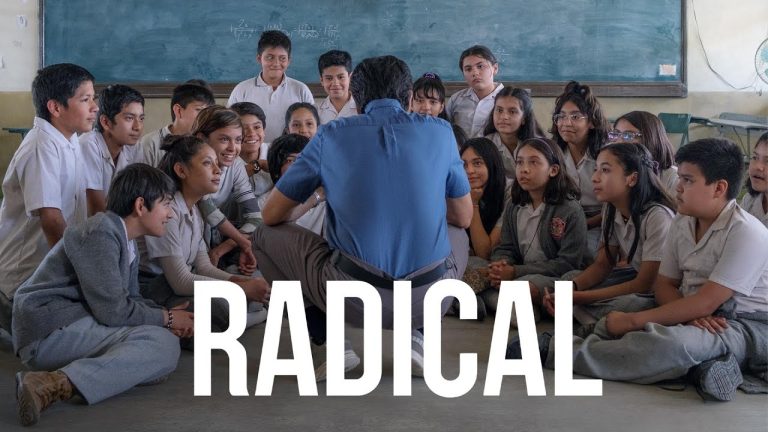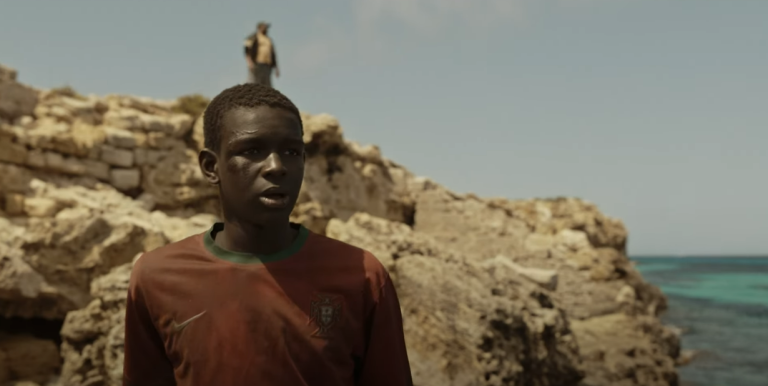

“Riddle of Fire” is a delightful story brought to life by Weston Razooli in his directorial debut. It follows three adventurous kids—Hazel, Jodie, and Alice—who boldly sneak into an OTOMO warehouse to grab a mysterious box labeled “Angel.” Despite a brief encounter with the manager, they triumphantly return home after a fun-filled escapade on their motorbikes.
In “Riddle of Fire,” the kids face many tough challenges, but one they can’t overcome is the parental password on their TV. They need to unlock it to play Angel, a game console, before summer ends. To do this, they must convince Hazel and Jodie’s sick mother, Julie, to unlock it by making her a special blueberry pie. This sets them on a difficult journey where they must obtain a secret recipe, gather ingredients from a grocery store, and retrieve a speckled egg from a grumpy person known as the Woodsy Bastard. They follow him into the forest hoping to reclaim the egg.
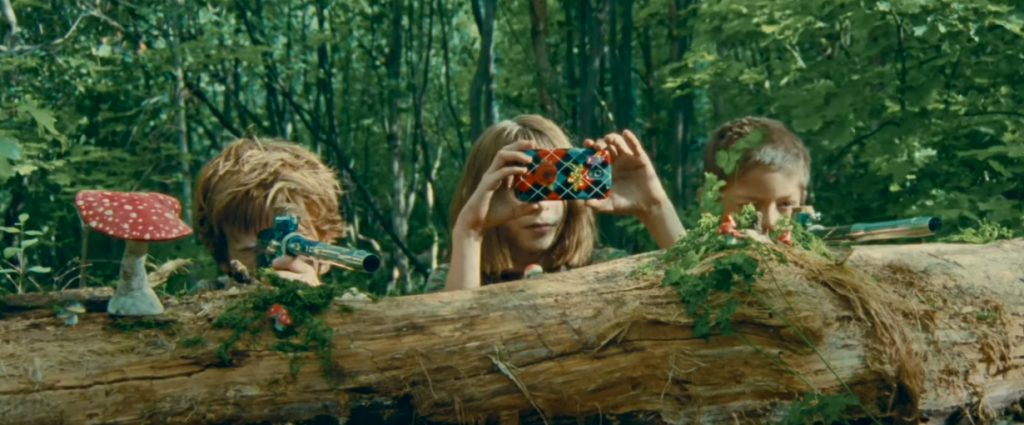
Razooli portrays children as complex individuals in “Riddle of Fire.” These characters, reminiscent of Peter Pan, are bold and outspoken, unafraid to challenge corrupt adults yet sometimes causing trouble due to their innocence. They strike a balance between being too grown-up and too naive, creating an exciting blend of fairy tale and fantasy. The young actors’ performances bring this enchanting world to life with their understanding of the roles.
The film’s imaginative atmosphere is enhanced by its vintage Kodak 16mm look and rebellious soundtrack, giving the woodland setting a mystical feel. The trio receives assistance from Petty Hollyhock, a character seemingly from another time and place. They seek her help to confront the Woodsy Bastard, also known as John Redrye, and his group of poachers: Anna-Freya, Suds, Kels, and Marty. In a story filled with irresponsible adults, this group stands out as the worst of the lot.

“Riddle of Fire” occasionally loses its momentum, getting caught up in the complexities of the script. However, it maintains a rare sweetness that prevents it from veering into darker territory. For instance, a scene where the kids visit a dingy bar initially seems inappropriate for their age. Yet, with the playful addition of the song “Baby Come Back,” reminiscent of “Little Miss Sunshine,” the tension dissipates, leaving behind a charming atmosphere.
Whether you connect with this film depends on your perspective: Some might be put off by scenes like the bar visit or find the lively kids overwhelming. Yet, the gentle tone of the journey, ending on a note of grace despite the selfish motives driving it, is a nuanced gamble. Razooli achieves this with confidence, making the fairy tale feel like a future classic.
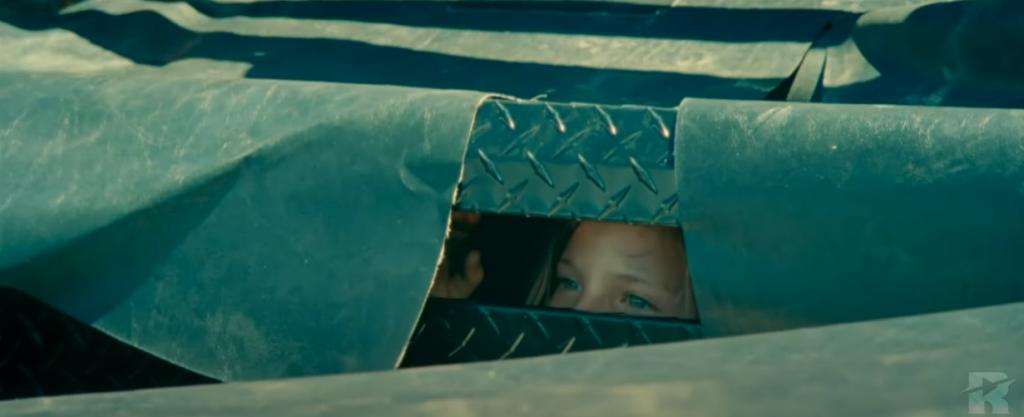
| Summary Point | Description |
|---|---|
| Plot | Three adventurous kids, Hazel, Jodie, and Alice, sneak into an OTOMO warehouse to obtain a mysterious box labeled “Angel,” leading to a fun escapade. |
| Main Challenge | The kids must unlock the parental password on their TV to play the “Angel” game console before summer ends. They need to make a special blueberry pie for Hazel and Jodie’s sick mother, Julie, who holds the key to unlocking the TV. |
| Characters | The kids are portrayed as bold and outspoken, reminiscent of Peter Pan characters, balancing between innocence and maturity. Other characters include Petty Hollyhock and the Woodsy Bastard, who add depth to the story. |
| Atmosphere | The film features a vintage Kodak 16mm look and rebellious soundtrack, creating a mystical atmosphere in the woodland setting. |
| Tone | While occasionally losing momentum, the film maintains a sweet tone, avoiding dark themes. A scene set in a dingy bar is lightened by playful elements, enhancing its charm. |
| Viewer Perspective | Viewer enjoyment depends on their perspective; some may find certain scenes off-putting or the energetic kids overwhelming. However, the overall gentle tone and nuanced storytelling make the film appealing, with potential to become a future classic. |

